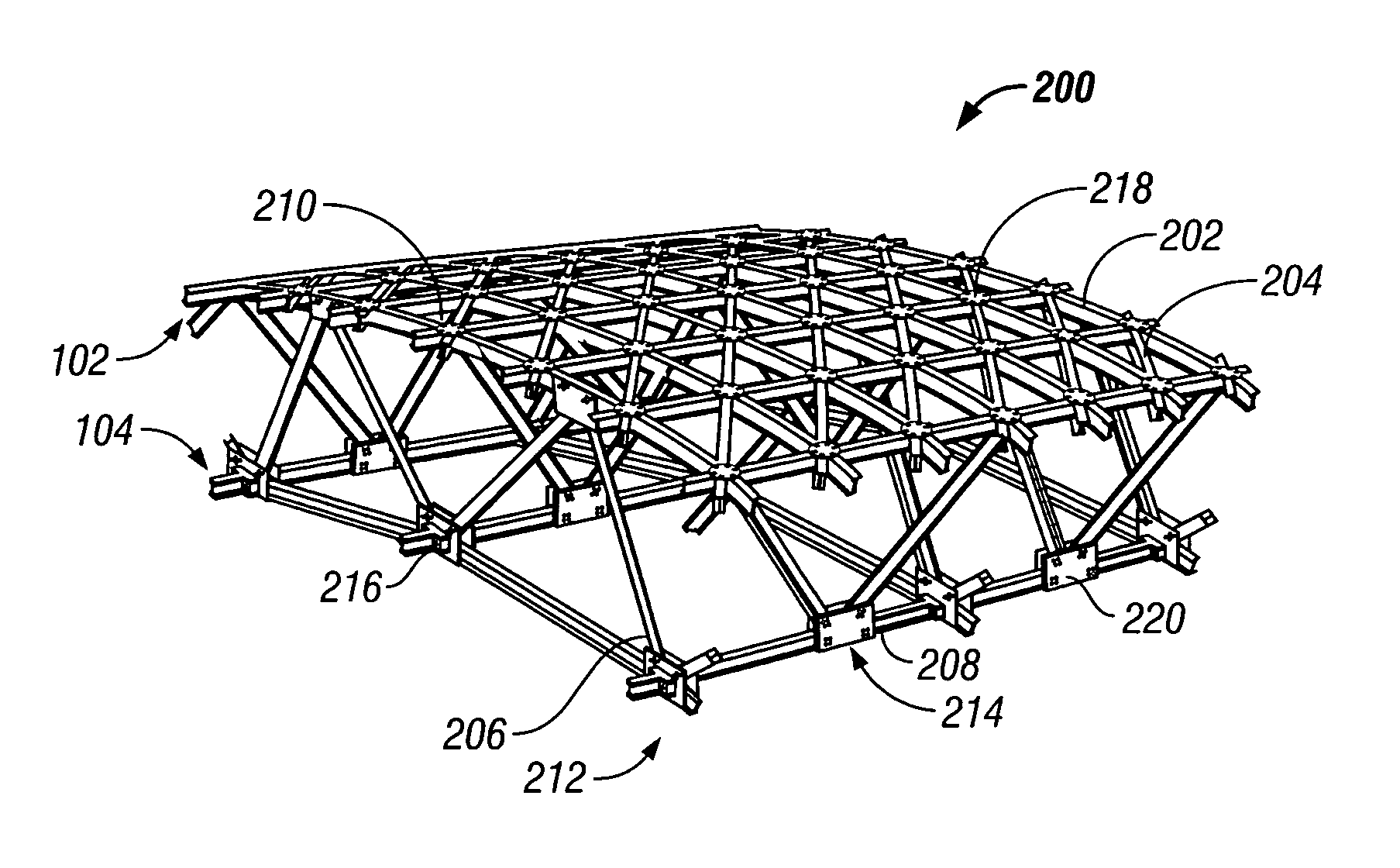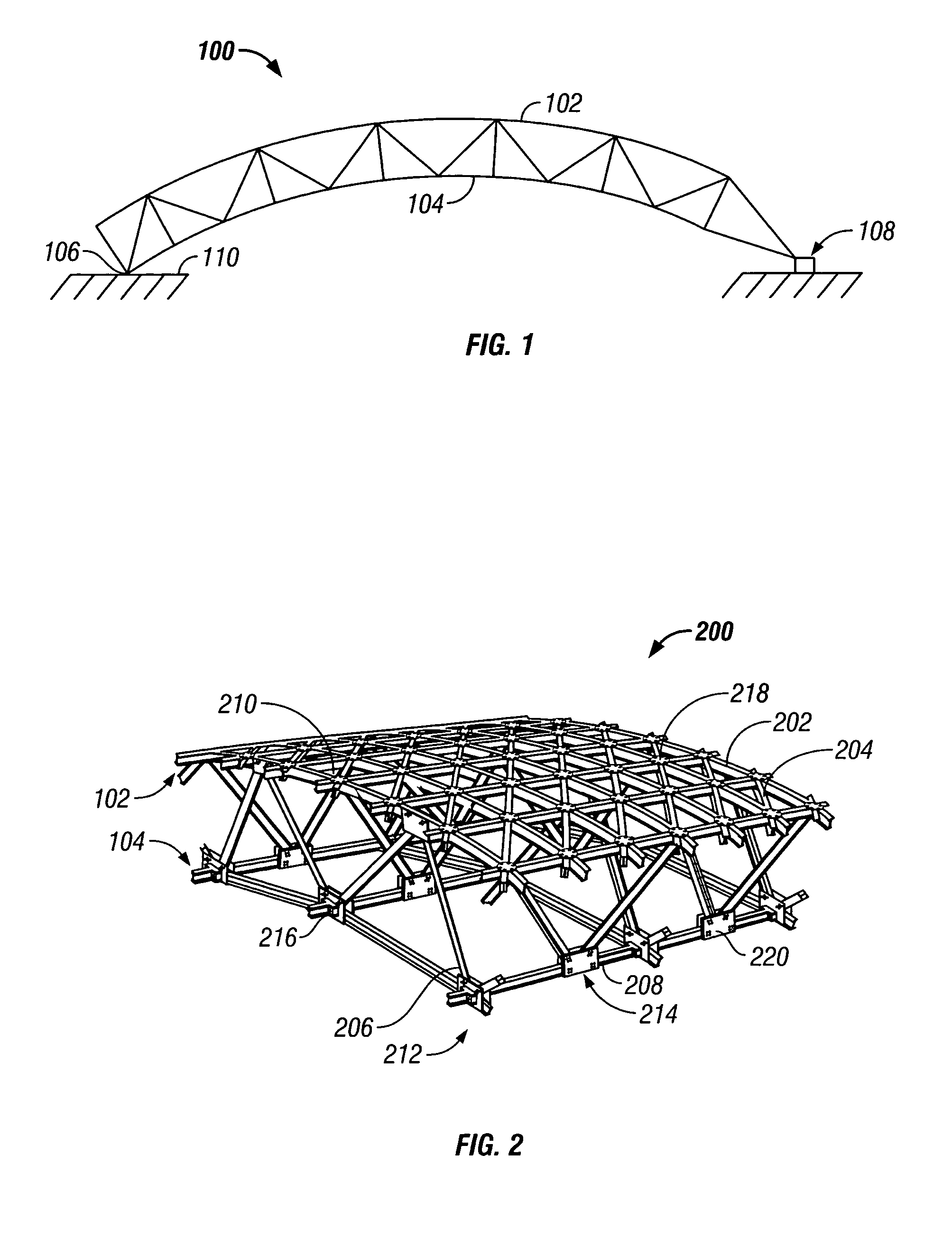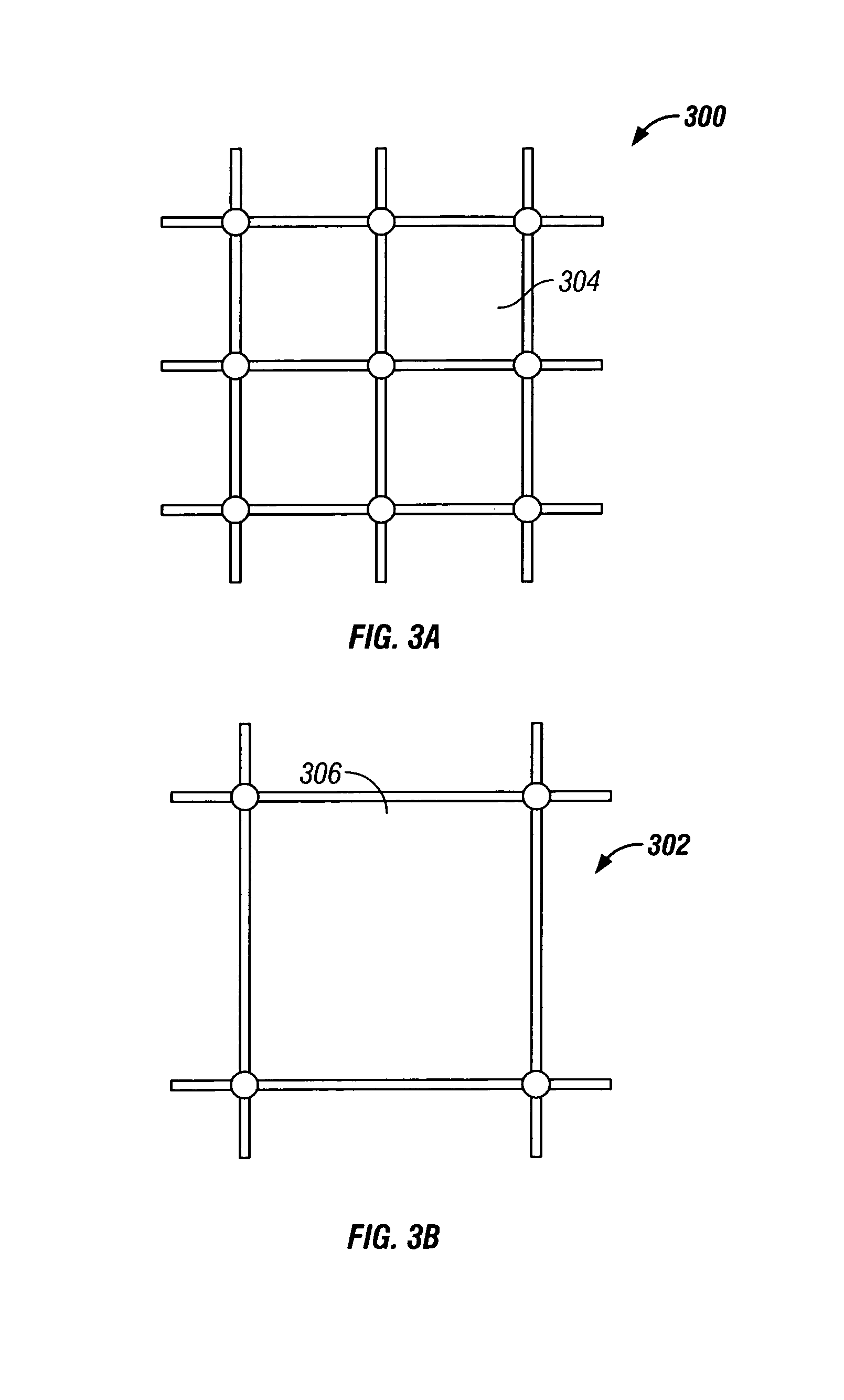Double network reticulated frame structure
a frame structure and network technology, applied in the direction of couplings, branching pipes, rod connections, etc., can solve the problems of limited span capability of single layer structures, undesirable high-profile roof systems, and inability to meet the needs of high-profile roof systems, so as to reduce the number of diagonal connectors, reduce the number of nodal frequency and connectivity patterns, and simplify the effect of efficiency
- Summary
- Abstract
- Description
- Claims
- Application Information
AI Technical Summary
Benefits of technology
Problems solved by technology
Method used
Image
Examples
Embodiment Construction
[0032]Following is a detailed description of exemplary embodiments of the invention wherein reference numerals for the same and similar elements are carried forward throughout the various figures. It should be noted that the figures are provided here for illustrative purposes only and should not be taken as drawn to any particular scale.
[0033]Referring now to FIG. 1, a side view is shown of an exemplary reticulated frame structure 100 according to embodiments of the invention. As can be seen, the reticulated structure is a double network structure that includes an external network 102 and an internal network 104. The external network 102 and internal network 104 are usually similarly shaped so that a curvature at any corresponding points on the network surfaces is defined by the same center of curvature. The curvature of the reticulated frame structure 100 may be a constant, single curvature of the kind that might be used in a roof for a stadium, sporting arena, and the like. Other ...
PUM
 Login to View More
Login to View More Abstract
Description
Claims
Application Information
 Login to View More
Login to View More - R&D
- Intellectual Property
- Life Sciences
- Materials
- Tech Scout
- Unparalleled Data Quality
- Higher Quality Content
- 60% Fewer Hallucinations
Browse by: Latest US Patents, China's latest patents, Technical Efficacy Thesaurus, Application Domain, Technology Topic, Popular Technical Reports.
© 2025 PatSnap. All rights reserved.Legal|Privacy policy|Modern Slavery Act Transparency Statement|Sitemap|About US| Contact US: help@patsnap.com



